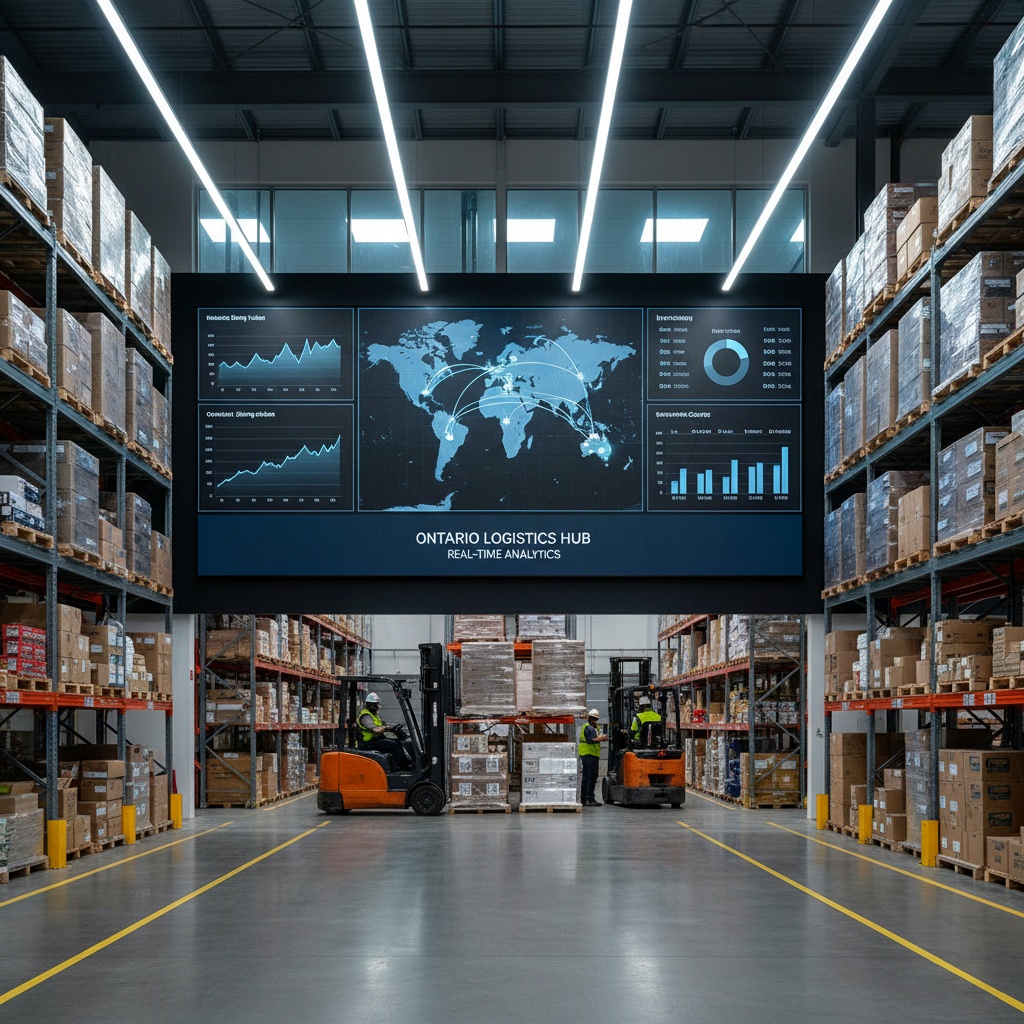The Role of Data Analytics in Modern Supply Chain Management
The supply chain has always been about moving goods efficiently, but in today’s economy, efficiency is not enough. Businesses in Ontario and across Canada face rising customer expectations, complex trade challenges, and unpredictable demand patterns. To meet these challenges, more companies are relying on third-party logistics (3PL) providers that use data analytics to create smarter, faster, and more reliable supply chain solutions.
For 3PLs, data is more than just numbers. It is the foundation for forecasting demand, managing inventory, optimizing freight routes, and improving overall warehouse fulfillment. By harnessing analytics, 3PL Ontario providers can help businesses gain a competitive edge in today’s data-driven world.

What is Data Analytics in Supply Chain Management?
In simple terms, data analytics in logistics involves collecting, analyzing, and applying data to improve decision-making at every stage of the supply chain. This data may include:
- Order accuracy and delivery performance
- Carrier transit times and freight costs
- Warehouse productivity metrics (e.g., pick/pack rates)
- Seasonal and regional demand fluctuations
For businesses working with 3PL Canada providers, this means greater real-time visibility and better long-term planning. Rather than making decisions based on guesswork, companies can rely on proven data to streamline their logistics strategies.
Benefits of Data Analytics for 3PLs
The use of analytics provides multiple benefits that directly impact both businesses and end customers. When paired with the expertise of a 3PL Ontario partner, these benefits translate into measurable results:
- Smarter Demand Forecasting
Analytics can reveal sales patterns and predict future spikes, such as the back-to-school season or the holiday rush. This allows warehouses to plan labor, stock levels, and transportation in advance, avoiding costly last-minute adjustments. - Optimized Inventory Management
Carrying too much inventory ties up capital, while stockouts damage customer trust. With data analytics, 3PLs can balance supply and demand by analyzing purchasing trends and replenishment cycles, ensuring products are available when needed without overstocking. - Improved Visibility & Tracking
From real-time tracking of shipments to monitoring warehouse fulfillment, analytics ensures businesses always know where their products are and when they’ll arrive. This transparency builds confidence with customers and improves service levels. - Cost Reduction Opportunities
One of the most powerful aspects of analytics is cost visibility. By examining transportation costs, warehouse layouts, and labor productivity, 3PLs can identify inefficiencies and provide targeted solutions that reduce expenses without sacrificing service quality.
Real-World Applications of Data Analytics in Warehousing
Within a 3PL warehouse, analytics is not just theoretical—it drives daily operations. Some practical applications include:
- Labor Planning: Predicting order volume and scheduling the right number of staff to handle peak and off-peak hours.
- Slotting Optimization: Analyzing product movement data to position fast-moving items closer to packing stations, reducing travel time for workers.
- Dock Management: Monitoring truck arrival and departure times to minimize delays and reduce dwell costs.
- Customer Behavior Insights: Helping eCommerce clients better understand buying trends, regional demand, and peak order times.
For businesses partnering with 3PL Canada providers, these applications mean faster fulfillment, reduced costs, and happier customers.
Predictive vs. Prescriptive Analytics
Not all analytics are the same. In logistics, two primary approaches are transforming the way 3PLs operate:
- Predictive Analytics: Uses historical data to forecast future events. For example, a 3PL Ontario warehouse might predict higher orders during Black Friday and prepare by increasing staffing and adjusting inventory.
- Prescriptive Analytics: Goes beyond forecasting by recommending the best actions. For example, it may suggest which carrier is best suited for a specific delivery route, balancing speed and cost efficiency.
Together, these approaches enable logistics providers to anticipate challenges and act proactively rather than reactively.
The Future of Data Analytics: AI and Machine Learning
While traditional data analytics already provides significant value, the future lies in artificial intelligence (AI) and machine learning (ML). These advanced tools enable 3PLs to process massive datasets in real time and continuously improve decision-making.
Some of the ways AI and ML are reshaping 3PL Canada logistics include:
- Identifying hidden trends and patterns that humans might overlook
- Continuously improving demand forecasts with self-learning algorithms
- Powering autonomous warehouse fulfillment through robotics integration
- Enhancing risk management during disruptions, such as supply shortages or shipping delays
As AI adoption accelerates, businesses that partner with data-driven 3PLs will benefit from even greater agility, scalability, and cost efficiency.
Why Data Analytics Matters for Businesses in Ontario and Canada
For businesses across Ontario and Canada, working with a 3PL provider that embraces data analytics can mean the difference between struggling with delays and thriving with a streamlined supply chain. Whether it’s ensuring on-time deliveries for retail partners, optimizing warehouse fulfillment for eCommerce brands, or navigating seasonal spikes, analytics turns logistics into a strategic advantage.
In a competitive market, companies that use data wisely can not only reduce costs but also deliver better customer service, build stronger supply chain resilience, and scale faster.

Conclusion
Data analytics is no longer optional in modern supply chain management—it’s essential. From forecasting demand and improving inventory control to cutting costs and enhancing visibility, analytics empowers 3PLs to deliver smarter, faster, and more reliable logistics solutions.
At Lane Logistics, we help businesses across Ontario and Canada unlock the full potential of their supply chains with data-driven 3PL services. By combining technology with industry expertise, we ensure our clients stay ahead in an ever-changing logistics landscape.
 Skip to main content
Skip to main content
